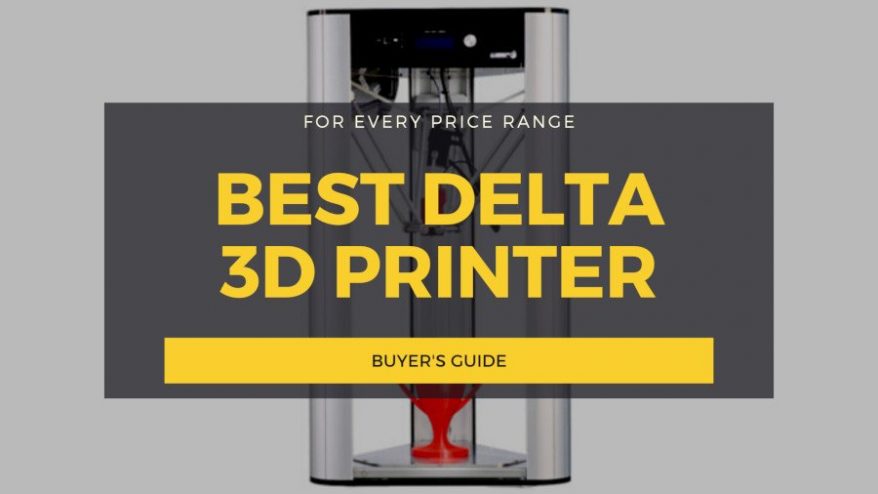
Named after the delta robots which inspired the RepRap Rostock and Kossel 3D printers, there are a number of small yet key differences between a delta 3D printer and a standard Cartesian FDM 3D printer.
Tall and extremely fast, we explain everything you need to know about delta 3D printers, and the best delta printers we recommend in every price range.
The Best Delta 3D printers and where to buy them
| Name | Max Build Volume (mm) | Speed (mm/s) | Price | Where to buy for best price |
|---|---|---|---|---|
| Monoprice Mini Delta | 110 x 110 x 120 | 150 mm/s | $179 | Amazon here |
| FLSUN Q5 | 200 x 200 x 200 | 150-300 mm/s | $260 | Amazon here |
| He3D K280 Delta | 280 x 280 x 600 | 150 mm/s | $320 | Amazon here |
| FLSUN QQ-S | 255 x 255 x 360 | 300 mm/s | $379 | Amazon here |
| Frankensbox FX-800 | 150 x 150 x 175 | 150 mm/s | $299 | Amazon here |
| Monoprice Delta Pro | 270 x 270 x 300 | 150 mm/s | $699 | Amazon here |
| WASP Delta 2040 PRO Turbo | 200 x 200 x 400 | 500-600 mm/s | $3,400 | Amazon here |
What is a Delta 3D Printer? How does Delta 3D Printing work?
Delta 3D printers are tall and thin; they can easily be told apart from standard Cartesianprinters from their cylindrical build. They use Bowden extruders, and usually have round rather than square print beds, which do not move.
Instead, the extruder above the print bed moves using 3 arms attached to individual posts located every 120 degrees to form a triangle. Though each individual arm can only move up and down on each post, by moving each of these delta arms individually using trigonometric functions the extruder can reach any part of the print bed and move in any direction.
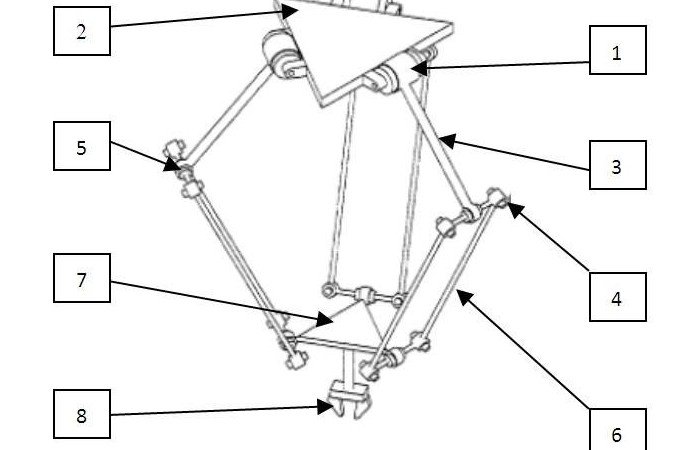
Delta 3D printers are known for their speed. Everything about them is built to be fast — the motors and extruders are fixed around the top and sides of the printer, and the print head is as light as possible to minimize drag and retain accuracy at such high speeds. It is not unusual for a good delta printer to print at 300mm/s, whereas most Cartesian printers average around 60mm/s. They’re a joy to watch at such high speeds and make large prints far more bearable.
How much does a Delta 3D printer cost?
Cheap Delta 3D printers can start at just a couple of hundred dollars, with cost savings if you’re willing to build the printer yourself. The lowest price printer we recommend is under $200.
For a delta 3D printer that prints faster, more accurately and more reliably, you can spend a few hundred dollars up to a few thousand depending on your preferences.
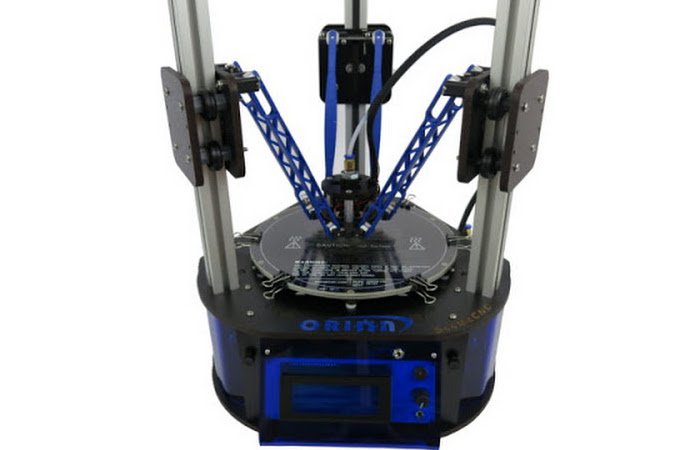
Delta 3D Printer Pros and Cons & Comparison vs Cartesian 3D Printers
Advantages of a delta 3D printer
- Extremely fast — even the cheapest delta 3D printer is twice as fast as most Cartesian printers. Cartesian printers are heavier and risk printing inaccurately by ‘overshooting’ the STL file dimensions if they try to print too fast, resulting from the momentum required to move the heavier printer parts.
- Large build volume 3D printing — delta printers can usually print very tall structures.
- Hypnotic print style — the speed and style of a delta print makes it almost a hypnotic experience. Not a technical advantage, but an aesthetic one.
Disadvantages of a delta 3D printer
- Smaller community of users — there are less users of delta printers so those facing problems may have more difficulty finding solutions. There are however facebook groups and forums for specific delta 3D printer owners to share information and help each other.
- Higher learning curve — many DIY delta 3D printers can take many hours to assemble and require previous electronics or 3D printing experience. Delta printers are generally known for being more for experts than beginners. We have however listed pre-assembled delta 3D printers in our ranking as well for those less confident in their DIY skills.
3DSourced is reader-supported. When you buy through links on our site, we may earn an affiliate commission. Learn more
Best Delta 3D Printer
1. Monoprice Mini Delta
- Delta 3D printer price: $179 — Available on Amazon here
- Maximum print volume: 110 x 110 x 120 mm
- Speed: up to 150 mm/s
- Weight: 1.8kg
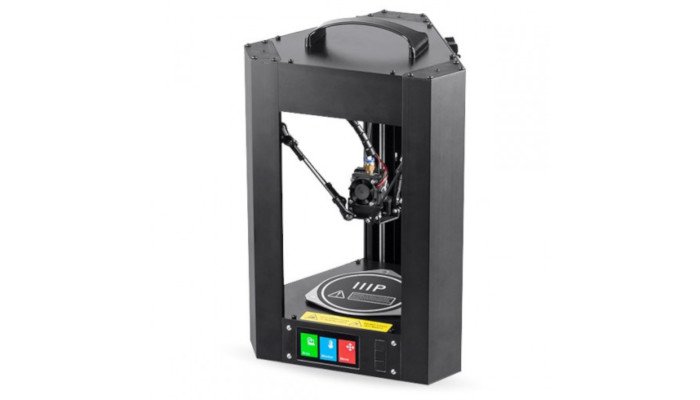
Pros
Fast for such a compact design.
Sturdy and durable.
The aluminum and steel frame anchors make it precise and prevent any vibrations.
Cons
Can’t work with flexible filaments.
Monoprice make some of the best budget 3D printers around, with the Monoprice Mini Delta no exception. Despite the low price, the Mini Delta features a solid steel and aluminium frame to retain stability and durability. Additionally, the heated bed means you can print ABS and PLA — though beginners to 3D printing will probably most enjoy the fact that the Mini Delta comes fully assembled and doesn’t require any DIY skill.
Incredibly, the Monoprice Mini Delta can print at 50 micron layer resolutions, fantastic for such a low price printer. The printer calibrates itself you don’t need to, and you can print remotely via WiFi, as well as by USB or SD card.
However, the print speed isn’t as fast as some delta 3D printers in higher price ranges. Though the 150 mm/s speed is still far faster than most FDM 3D printers, for a delta printer this is still mediocre. It is easy to use, comes assembled, and compatible with Cura or Repetier-Host 3D slicers, so for a cheap delta 3D printer it’s a great choice.
2. FLSUN Q5
- Price: $260 — Available on Amazon here
- Maximum print area: 200 x 200 x 200 mm
- Speed: up to 300mm/s (recommended around 150mm/s)
- Weight: 6.5kg
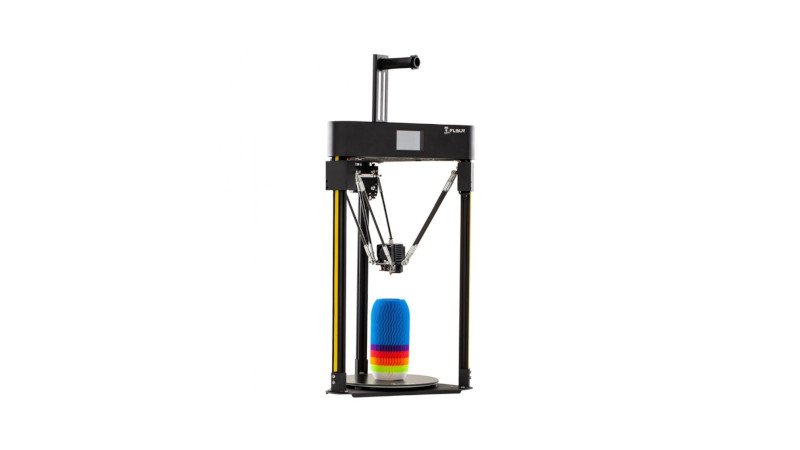
Pros
Metal structure for stability.
Easy to use touchscreen.
Very fast with speeds up to 300mm/s.
Cons
Smaller print volume than QQ-S or other delta printers.
The lower price version of the highly rated FLSUN QQ-S, the FLSUN Q5 is one of the best delta 3D printers around. It still features a solid metal structure for stability, still has the easy-to-use touchscreen, and can still print up to 300mm/s.
One of the key differences between the QQ-S (apart from being $100 cheaper) is the smaller print volume: 200 x 200 x 200 mm. This is still large enough for most prints, but those looking for a large 3D printer may prefer the QQ-S or another delta 3D printer we recommend. It’s easy to assemble, prints almost all the standard FDM filaments, and has a power resume function that can save you so much stress in the event of a power outage.
It’s not quite as accurate as some of the printers on this list, but for a low cost 3D printer that can print quickly and with reasonable accuracy, it’s a great choice.
3. He3D K280 Delta — Huge delta 3D printer
- Price: $329 — Available on Amazon here
- Maximum build area: 280 x 280 x 600 mm
- Delta 3D printer print speed: 150 mm/s
- Weight: 10.5kg
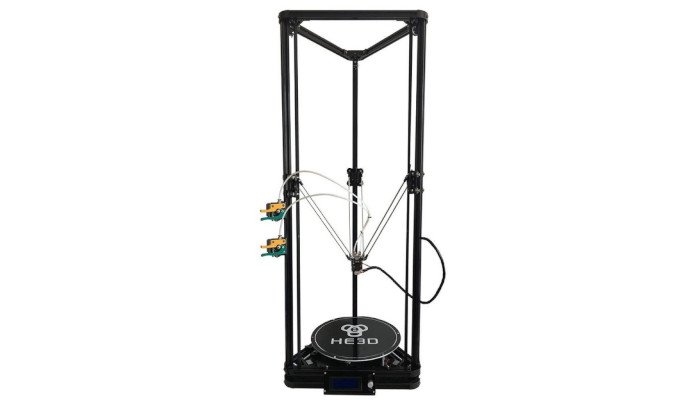
Pros
The printer is massive.
Can print with a wide variety of filaments.
Active community on Facebook for support.
Cons
Difficulty with assembly.
The He3D K280 Delta is a truly massive 3D printer. You’ll need to assemble it yourself, but when you have, this beast prints taller parts than almost any other 3D printer in the world.
The frame is made of solid aluminium and steel, and prints a wide variety of filaments including Wood filaments, Nylon, TPU, HIPS, Flexible PLA as well as standard PLA and ABS. It’s compatible with Repetier-Host and like the Monoprice Mini Delta can print with a very impressive minimum 50-micron layer resolution. Like the Mini Delta you can also print over WiFi, or with a USB or SD card.
The reason you get so much printing volume for such a low price is that you do need to build it yourself. Some Amazon reviewers have highlighted difficulties with some of the screws during the build process, but fairly simple fixes have been found. There is an active Facebook group for the K280 Delta if you do run into problems, which you can find here.
If you’re a beginner or not as confident with your making skills, go for the FLSUN QQ-S (or Mini Delta if you want to save money), but if you’ve got the skills you can reap the print size benefits with the He3D K280 Delta. Oh, and they also make a really neat 3D scanner.
4. FLSUN QQ-S
- Delta 3D printer cost: $379 — Available on Amazon here
- Max print volume: 255 x 255 x 360 mm
- Speed: up to 300 mm/s
- Weight: 12.5kg
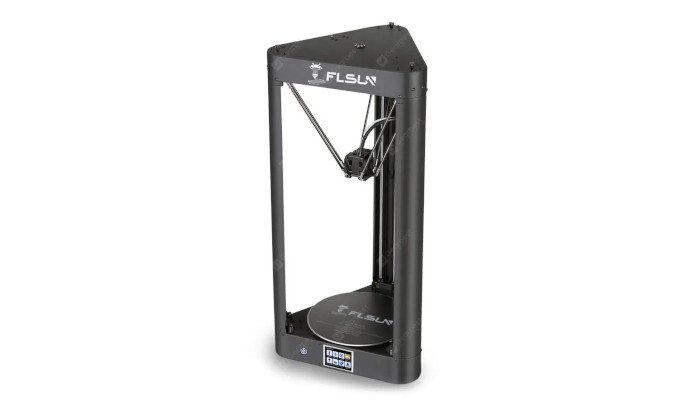
Pros
Large printing area and fantastic speeds.
A heavy metal frame keeps the printer stable during printing.
Comes with a lattice platform bed, to make it simple to remove prints once finished.
Cons
The open chamber makes it dangerous for children to be around.
We recommend the FLSUN QQ-S highly as one of the best budget delta 3D printers around. It comes 90% assembled (the last few steps take around 20 mins to complete), comes with a 3.2 inch touchscreen, and can level itself. You can read more in our full FLSUN QQ-S review.
Influenced by the RepRap Kossel and in true delta 3D printer style, the FLSUN QQ-S has both a large printing area and fantastic print speed, able to print up to 300 mm/s. It can print PLA, ABS, HIPS, PVA, wood-filled filaments, and its heavy metal frame keeps the printer stable during printing.
Another feature that improves your 3D printing experience is the lattice platform bed, designed to make it as simple as possible to remove prints after printing has finished, as well as maintain temperatures to reduce warping. And it does all this while remaining under 50dB, one of the quietest 3D printers around! It’s very highly rated as one of the best 3D printers in its price range.
5. Frankensbox FX-800 — Best Delta 3D printer for Beginners
- Delta 3D printer price: $299 — Available on Amazon here
- Max print volume: 150 x 150 x 175 mm
- Speed: up to 150 mm/s
- Weight: 10kg
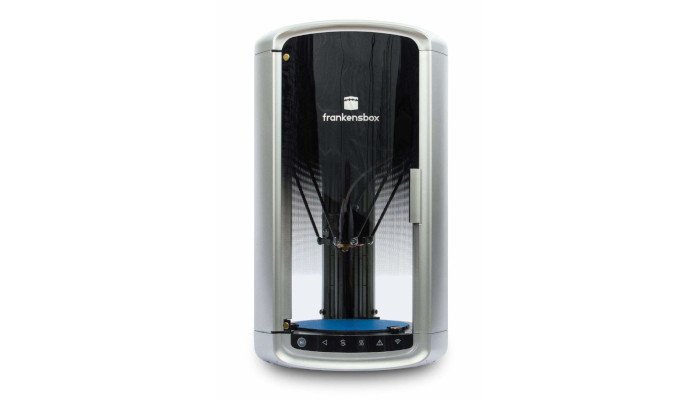
Pros
Very quiet.
Convenient and comes almost fully assembled.
Good customer support.
Cons
Not as fast as the FLSUN QQ-S.
The Frankensbox FX-800 is a compact delta printer, printing smaller sizes than the FLSUN QQ-S Delta and also able to print at noises under 50 dB.
Like the FLSUN QQ-S it comes assembled — fully, rather than 90% — and is designed for those who value convenience. It’s the perfect delta 3D printer for those that want to just plug it in, set up the 3D printer software, and run it straight away. The FX-800 can print with resolutions of up to 100 microns, features one button leveling, and can print remotely via WiFi, SD card or USB stick.
With a max speed of 150 mm/s, it isn’t as fast as the FLSUN QQ-S, but sells itself on convenience. You get a 1-year warranty with your purchase so you’re insured against any problems, and if you have any issues with your FX-800, Frankensbox have US-based customer support to help you find a solution.
6. Monoprice Delta Pro
- Price: $699 — Available on Amazon here
- Maximum print area: 270 x 270 x 300 mm
- Speed: up to 150mm/s
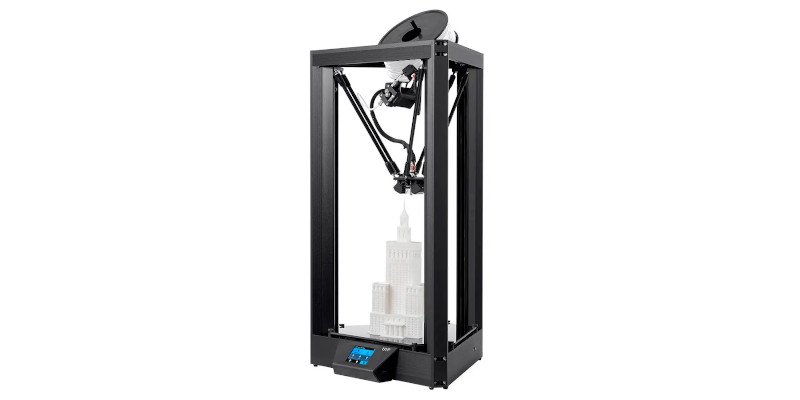
Pros
Full metal parts for stable printing.
Comes with a glass print bed for good adhesion.
Cons
Max resolution is mediocre.
The premium and upgraded version of the cheaper Mini Delta, the Delta Pro has a much larger build area, can auto level, and features full metal parts for stable printing unaffected by vibrations.
It comes with all the features you’d expect: a sensor for detecting when filament is low to avoid ruining prints; and a glass print bed for good adhesion and easy print removal.
The Delta Pro is compatible with all common filaments, like PLA, ABS, PETG and wood filaments, as well as tougher filaments like Nylon, and metal-filled materials. It’s accurate, with up to 50-micron layer resolutions, and prints up to 150mm/s.
Overall, it’s one of the best delta 3D printers under $1,000.
7. WASP 2040 PRO Turbo — Fastest Delta 3D printer in the world!
- Price: $3,400 — Available on Amazon here
- Max print volume: 200 x 200 x 400 mm
- Speed: up to 500-600 mm/s
- Weight: 25kg
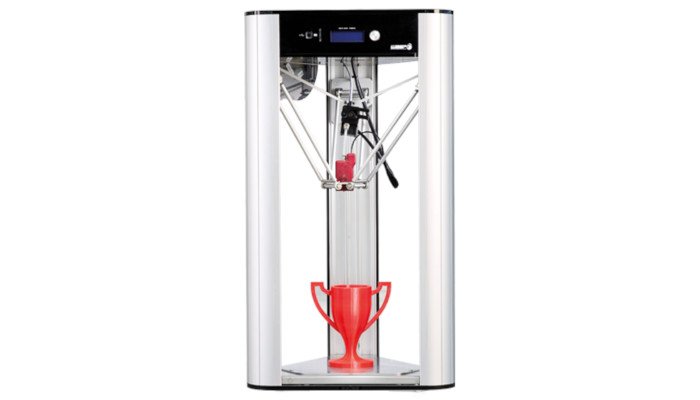
Pros
Extremely fast with speeds up to 600mm/s.
Quality of life features.
Good stability.
Cons
Post-processing of parts is difficult due to the enclosed print chamber.
Italian 3D printer company WASP not only make great delta 3D printers but have also made great contributions to 3D printed houses. They claim that the WASP 2040 Pro Turbo is the fastest 3D printer in the world, with a maximum print speed of 600mm/s, 10x the speed of some Cartesian printers! It’s popular with busy makers who value the speed, and small businesses looking to make fast plastic prototypes.
Everything is optimized for speed, but that doesn’t mean anything is sacrificed. The WASP 2040 PRO can still print with great accuracy — up to 50 microns — and with good stability from the strong aluminium frame for crisp looking finished prints. It can also fully calibrate itself with its auto calibration system.
Quality of life features include the ability to resume at the exact point on the exact layer where printing was paused or stopped — for example in the event of a power outage. This is an underrated benefit; we all have a horror story of a 40 hour print that was ruined because a random circumstance caused a print error with just a few hours to go, having to start all over again. But not with the WASP. The filament detector also informs you and stops printing when you run out so that prints never fail.
The WASP 2040 PRO Turbo can print a variety of 3D printer filaments, including PLA, PETG, ABS, PA, Carbon, and can be upgraded if you buy the clay extruder add-on for 3D printing clay. You can use the WASP with Cura, Slic3r or Simplify3D for slicing, and know that the printer is fast, effective and reliable. Undoubtedly one of the best delta 3D printers around, it just becomes a question of money as the WASP is noticeably more pricey than some lower priced delta printers we recommend.




